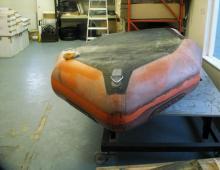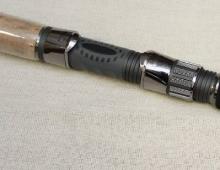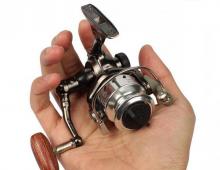Fly fishing tackle for beginners
If you are a fan of outdoor activities and fishing, do not like to sit in one place looking at a float or a gatehouse in anticipation of chance, but are ready to move for hours along the shore of a reservoir in search of a promising place, then fly fishing tackle will become a saving tool for you from boredom, and will bring a lot positive from the process of catching her.
Have you ever fly fished? Then you can be envied, because you have everything ahead. This method of fishing allows you to catch fish both from the surface of the water and from its thickness, and sometimes watch the fish while biting.
For the first time, this method of fishing was mentioned in the 15th century, and was considered the privilege of aristocrats, but now any fisherman, if desired, can do fly fishing, having studied the tactics and techniques of fishing, as well as methods for making artificial bait (flies).
Where to begin?
The answer to the question of how to get the proud title of a fly fisherman, where to start, will be unambiguous, with the study of theory. To get started you need:
- Explore several types of casting.
- Learn the theory of dry fly fishing, nymph, streamer.
- Familiarize yourself with the types of casting artificial bait.
- Familiarize yourself with the classification of rods and types of fly fishing cords.
- Ask an experienced fly fisherman for help in choosing tackle.
Tackle selection
At the first steps in the study of fly fishing, you should not buy expensive tackle, especially since each fishing condition has its own tackle. Pay attention to budget options for gear in the form of a universal set.
The set includes:
- rod;
- cord;
- inertial coil;
- backing (winding);
- lead material and undergrowth;
- artificial baits (flies, nymphs, streamers).
Over time, when you master the basics of fly fishing with the help of a universal set, decide where, what and under what conditions you will catch, you will definitely want to purchase new, more specialized gear. The choice should start with a rod, because it, like nothing else, comes first in its uniqueness.
Fly fishing rods
- one-handed (designed for catching fish of medium and small sizes), from 2 to 3 meters long and weighing no more than 1/3 kg;
- two-handed (heavier, focused on large fish), 4 to 6 meters long and weighing.
In addition to the power of the rod, it is customary to subdivide into classes. Depending on the choice of the class of the rod, the selection of the remaining components depends:
- coil;
- cord.
The division into classes occurs according to the following scheme:
- 0–1st class (ultralight);
- 2nd-4th class (rods designed for fishing with light flies in calm weather);
- 5th–7th class (universal rods for catching medium fish in almost all water bodies);
- 8th-10th class (heavy rods for large fish and large ponds);
- 11-12th grade (fishing rods for sea fishing).
According to the number of components, rods are 2- and 4-link.
When buying, it is necessary to take into account that the smaller the number of components, the higher the strength and reliability of the rod blank. Although a four-link rod is inferior to a 2-link rod in strength, it wins in length.
In turn, the main disadvantage of a two-link blank is the complexity of its transportation due to the length of the links, and therefore the chance of their breakage increases.
Coil
Due to the fact that fly fishing is an active type of fishing and a large load falls on the reel during operation, the following requirements are imposed on the reel for a fly rod:

Fly fishing reel is one of the types of inertial reels.
According to its classification, the reel must correspond to the class of the rod on which it will be installed.
Reel drum
The following requirements are imposed on the drum (spool) of a fly fishing reel:
- capacious drum (up to 50 meters of fishing line), and in models for sea fishing or on deep lakes up to 90 meters;
- equipped with a retarder (the possibility of adjusting the rotation of the drum speed), which reduces the risk of slack, sagging and tangling of the cord and fishing line.
Undergrowth or leash
The undergrowth is close to the usual fishing line in its characteristics.
The sequence of winding materials on the coil looks like this;
- Cord.
- Undergrowth (length is selected depending on the length of the rod).
- Leash.
- Fly.
The undergrowth in the tackle performs a masking function, since if the leash is tied immediately to a thick cord, this will absolutely scare away the fish. Often the undergrowth is cone-shaped.
How to catch more fish?
I have been active fishing for quite some time and have found many ways to improve the bite. And here are the most effective ones:- . Attracts fish in cold and warm water with the help of pheromones included in the composition and stimulates their appetite. It's a pity that Rosprirodnadzor wants to ban its sale.
- More sensitive gear. About reviews and instructions for other types of gear you can find on the pages of my site.
- Lures using pheromones.



